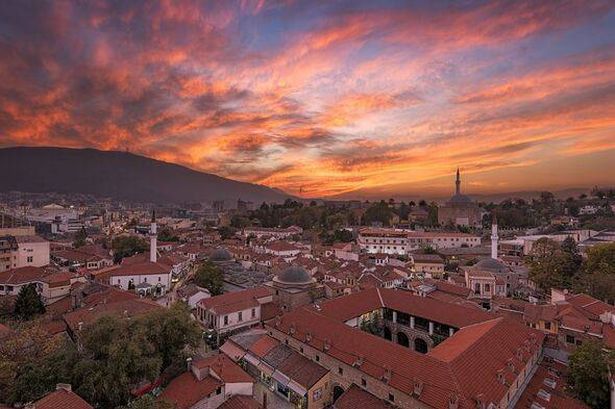The country received just over 750,000 foreign tourists in 2019, making it one of Europe’s most underrated destinations.
When planning a getaway, it’s easy for travellers to overlook the fact that countless other tourists will likely have the same idea.
Anyone who has visited Paris’s Louvre Museum will be familiar with the heaving crowds shuffling forward to catch a fleeting glimpse of the somewhat underwhelming, yet undeniably iconic, Mona Lisa.
Or maybe you’ve wandered through Pile Gate in Dubrovnik, only to find yourself surrounded by fellow sightseers from every angle, rushing you through the increasingly busy tourist attraction.
But if you’re on the hunt for a European getaway with significantly fewer crowds, North Macedonia is the perfect place.
Stunningly underappreciated, this former Yugoslav nation nestled in the heart of the Balkans deserves a spot on your travel list before word spreads about its exceptional natural splendour, reports the Express.
One of North Macedonia’s crown jewels is the breathtaking and tranquil Lake Ohrid, among Europe’s most ancient and deepest lakes.
Nestled along the mountainous frontier between North Macedonia and Albania, this peaceful retreat has been hailed as “the most beautiful place on Earth” by Tripadvisor reviewer mani_kalai.
The reviewer went on to lavish further praise on the picturesque location, adding: “Amazing view, can take a boat trip to see the town view from the lake. Friendly local people, lots of bar[s], restaurants and shop[s].”
Based on figures from travel comparison site KAYAK, a double room in Ohrid typically costs around £52 per night – though prices can fluctuate significantly, with some accommodation available for as little as £30 a night.
A three-hour journey from the stunning Lake Ohrid brings you to North Macedonia’s capital, Skopje.
Best known as Mother Teresa’s birthplace, Skopje is an underappreciated and quietly charming European destination.
A perfect way to while away an afternoon in Skopje is wandering through the vibrant Old Bazaar, weaving through the cobblestone streets of this “astonishing place” as Tripadvisor reviewer Arsenie V. described it.
“Enjoy some rakia the way the locals do. I can assure you that you won’t get bored in this region because it is very lively,” they added.
Another essential sight in Skopje is the historic Stone Bridge, which links the Old Bazaar to the main square, effectively connecting the historic quarter with the modern city centre.
A 45-minute bus journey from Skopje to the stunning Matka Canyon costs just 35MKD (£0.50) each way, though the scenery is worth considerably more than the incredibly cheap fare.
Featuring numerous monasteries and caverns, Lake Matka is a stunningly picturesque spot that’s certain to become increasingly popular as word spreads.
Vrelo Cave is thought to be among Europe’s deepest, possibly even the world’s, and the lake offers excellent opportunities for various watersports. Other visitors can savour breathtaking views, dine at exquisite restaurants and embark on boat tours at this hidden gem of a destination.

